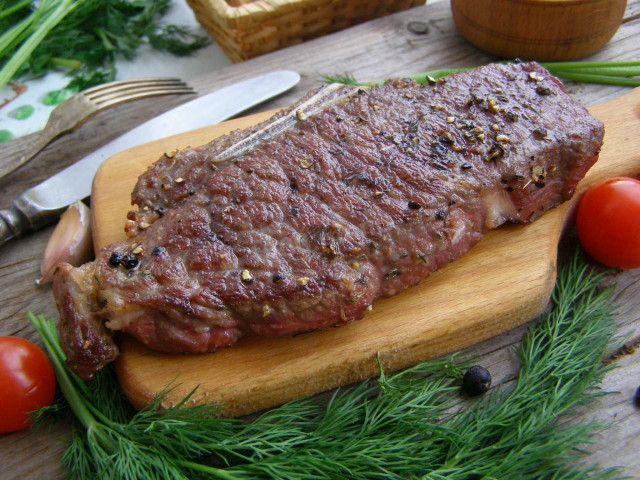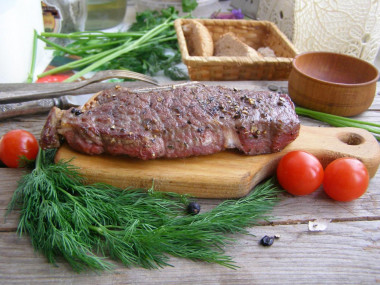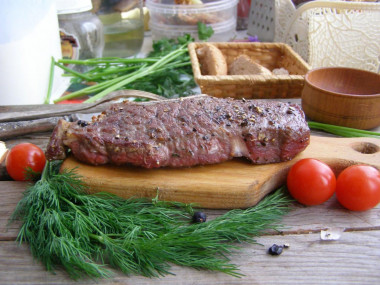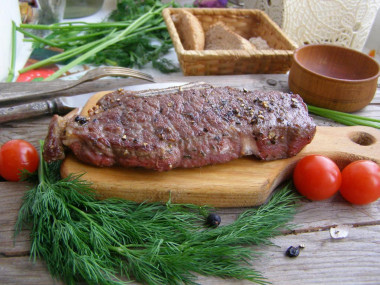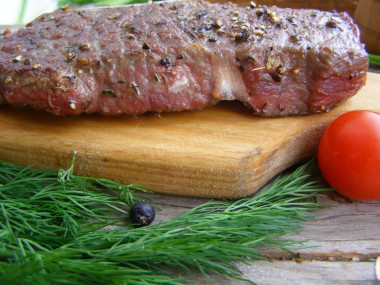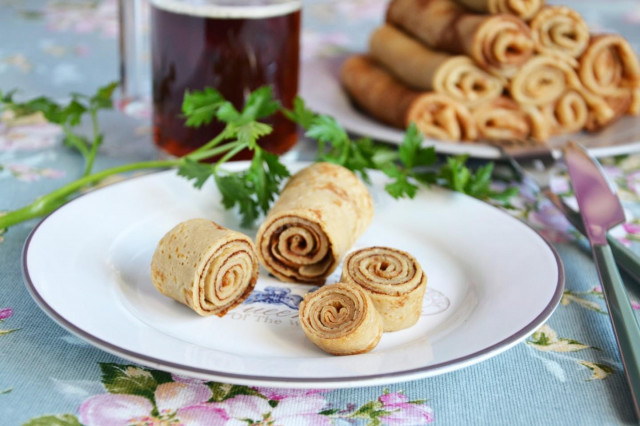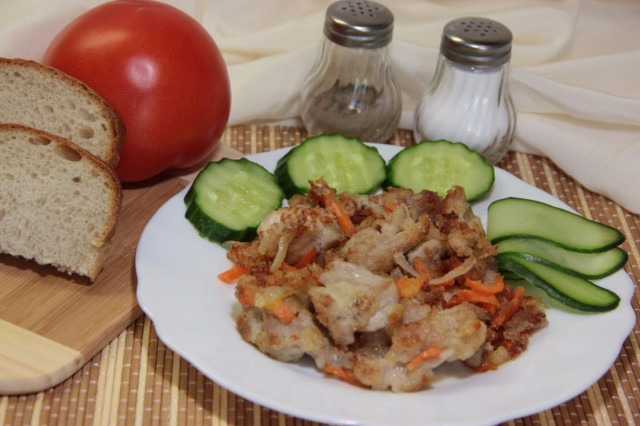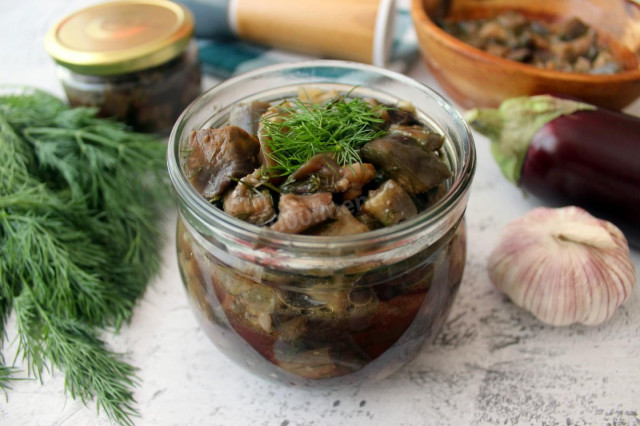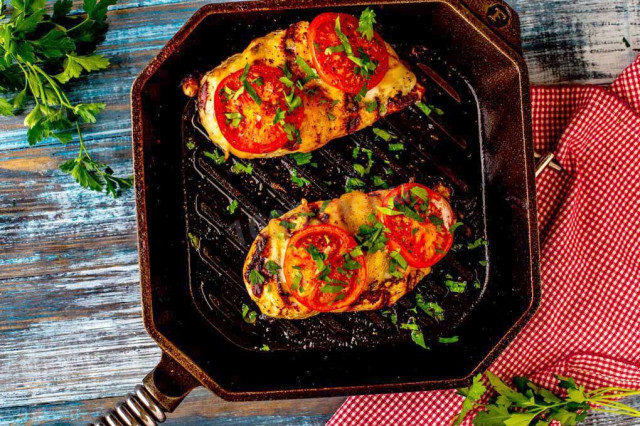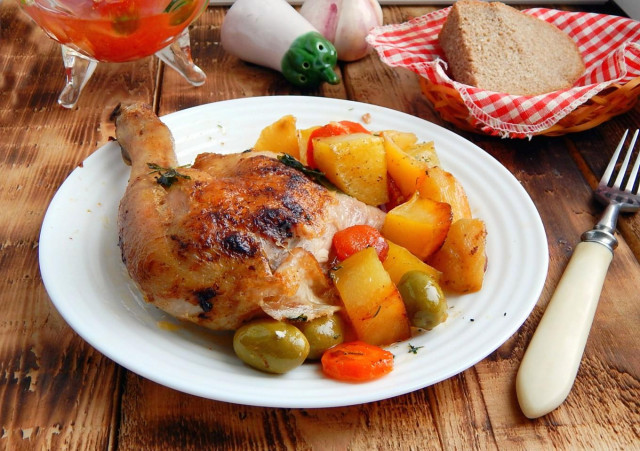Composition / ingredients
Step-by-step cooking
Step 1:
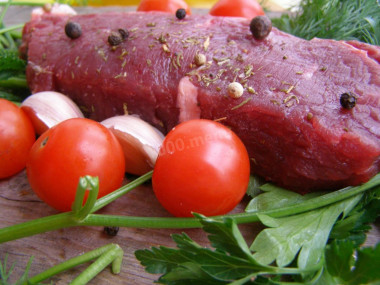
To cook the right beef steak, you must first determine the degree of roasting (there are, of course, 5 of them, but many choose Medium Rare, Medium and Medium Well) and choose a piece of meat of the desired thickness.
Step 2:
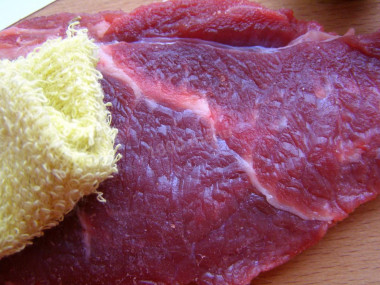
In order for the steak to turn out right, the meat must be completely dry before cooking – let's get it wet.
Step 3:
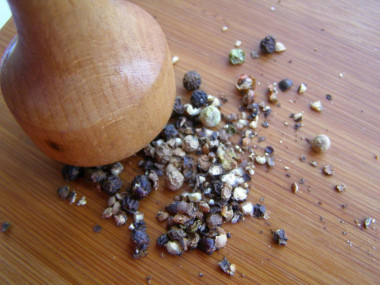
Next, spices. Traditionally, ground black pepper is used. It is better to grind it right before the roast in a convenient way. But keep in mind – not to the state of dust, but to the state of such particles as in the photo.
Step 4:
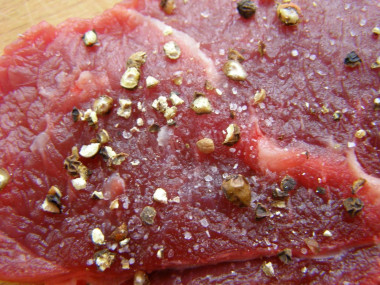
At this point, you can already put the pan on gas – let it heat up, we need a well–warmed frying pan (preferably a grill). Salt a piece of meat greased with oil before this, roll it in freshly crushed pepper, let it lie down, and then lightly beat the surface with your fingers so that the salt and spices are well fixed on it.
Step 5:
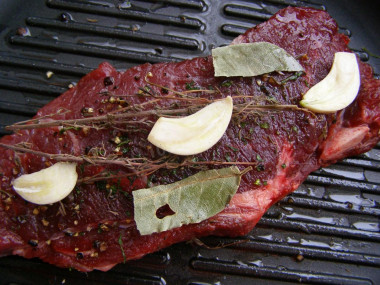
If the pan is hot, pour oil into it. Is it hot? Immediately send the steak here, covering it with spices, bay leaf, garlic, cut into slices. The oil should be off-kilter.
Step 6:
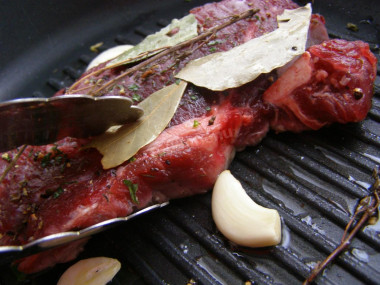
Don't leave the stove for a second. We need to catch the right moment, because the degree of roasting should be exactly what you have chosen. To get a lightly toasted steak, three minutes of frying on both sides is enough. If you want a better crust, add a minute, and so on. Turning over to the other side, do not use a knife or fork in any case. The juice should not leak out. Therefore, we take something more comfortable and turn it over to the other side
Step 7:
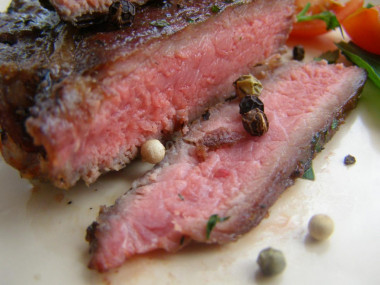
Is the steak ready? Remove it from the pan and serve. That's such a beautiful steak turns out in the degree of Medium Rare roasting.
Step 8:
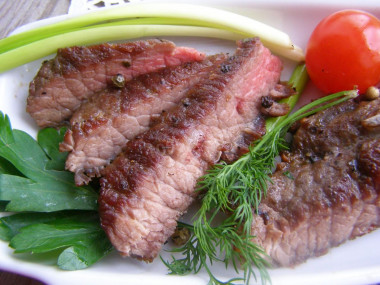
And this is Well Done.
And more tips
Meat. Of course, this is not always realistic, but ideal beef steaks are obtained from the meat of young bulls of meat and dairy breeds that feed on grass and hay all their lives. The thickness of the portion piece without bones and veins should be within 3 cm. Cutting only across the fibers.
When buying beef at the supermarket, do not forget to look at the slaughter date! Counting 20-25 days from it, consider that on this day it is necessary to fry the steak.
Frozen meat is thawed in the main compartment of the refrigerator. Then all the qualities are useful and will be preserved. In this case, put a piece of meat in a plastic bag, close it tightly and lower it into a basin with water.
Do not wash the meat before cooking. If you have washed the piece, drain it, and then blot it with a napkin or towel before cooking.
Do not try to beat off the steak before frying – the meat will lose its structure and juices.
Nuances of cooking. Everything is decided by the degree of roasting. In a steak with blood, the temperature inside it is 45-50 degrees, in medium–rare meat – 55-50, in a deep-fried steak - 65-70 degrees. You hardly have a special thermometer to check the temperature, so you will have to determine it by eye.
It must be remembered that with strong frying, juices are quickly lost, and the meat becomes dry.
Soak the meat before frying in the kitchen for an hour or two.
You don't need to add oil if you have a ribbed cast-iron frying pan, just heat it up to a light haze.
Do not fry several steaks, otherwise the temperature inside the pan will be disturbed and the meat will simply be stewed in its juice.
Steaks should be turned over only with cooking tongs, otherwise you will lose the juice.
Before turning the steak over, make sure that the fried side has a nice brown tinting.
Do not rush to turn over if the meat does not lag behind the pan. It should still be fried.
If you want, bring it to the desired degree of readiness in the oven (preheated to 190 degrees), wrapping a container with steaks with foil and baking for 10 minutes filet mignon 5 cm thick, 7-8 rib-eye / sirloin steaks or for more pronounced roasting 10-15 minutes, respectively.
Spices. They can be different – starting with peppers, ending with herbs, spices, etc. It is better to take coarse salt.
Frying oil. It can be vegetable or sunflower. If you decide to use butter, beware – both butter and meat can burn.
Dishes. Yes, there is a special grill pan for steaks. You can also use a cast-iron frying pan.
If there is no special knife, then choose the sharpest knife for slicing steaks.
Any oils are useful only until a certain temperature is reached - the point of smoking, at which the oil begins to burn and toxic substances, including carcinogens, are formed in it. How to determine the roasting temperature and choose the best oil for frying, and which is better not to use at all, read here .
Important! An incorrectly selected frying pan can ruin even the best recipe. All the details on how to choose the perfect frying pan for different dishes read here .
If you use ready-made spice mixes, be sure to read the composition on the package. Often, salt is already present in such mixtures, take this into account, otherwise you risk over-salting the dish.
Caloric content of the products possible in the composition of the dish
- Melted beef fat - 871 kcal/100g
- Fat beef - 171 kcal/100g
- Lean beef - 158 kcal/100g
- Beef brisket - 217 kcal/100g
- Beef - okovalok - 380 kcal/100g
- Beef - lean roast - 200 kcal/100g
- Beef shoulder - 137 kcal/100g
- Beef - ribs - 233 kcal/100g
- Beef - ham - 104 kcal/100g
- Beef - tail - 184 kcal/100g
- Boiled ham - 269 kcal/100g
- Beef corned beef - 216 kcal/100g
- Garlic - 143 kcal/100g
- Bay leaf - 313 kcal/100g
- Vegetable oil - 873 kcal/100g
- Black pepper peas - 255 kcal/100g
- Salt - 0 kcal/100g
- Spices dry - 240 kcal/100g

